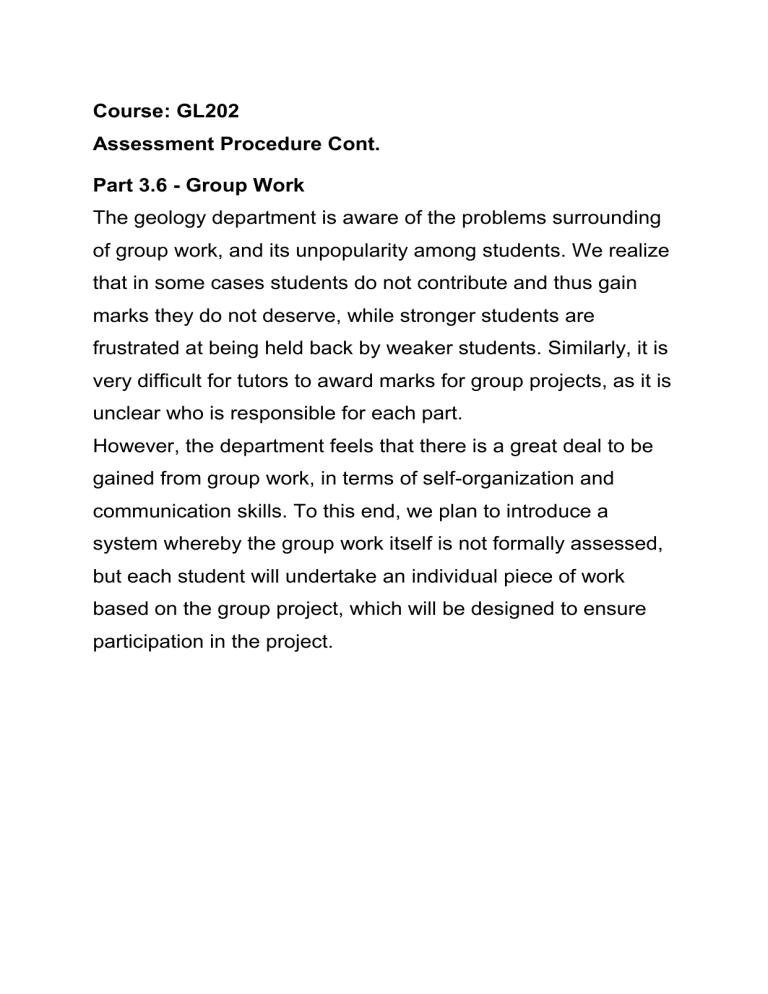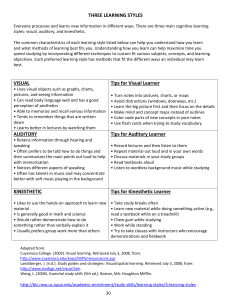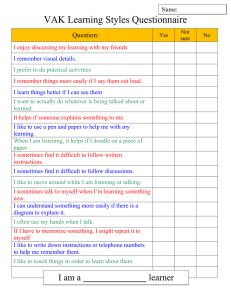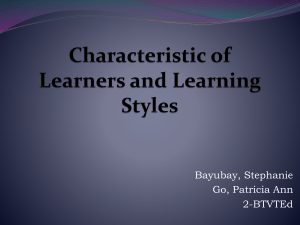
Course: GL202 Assessment Procedure Cont. Part 3.6 - Group Work The geology department is aware of the problems surrounding of group work, and its unpopularity among students. We realize that in some cases students do not contribute and thus gain marks they do not deserve, while stronger students are frustrated at being held back by weaker students. Similarly, it is very difficult for tutors to award marks for group projects, as it is unclear who is responsible for each part. However, the department feels that there is a great deal to be gained from group work, in terms of self-organization and communication skills. To this end, we plan to introduce a system whereby the group work itself is not formally assessed, but each student will undertake an individual piece of work based on the group project, which will be designed to ensure participation in the project. VAK Theory One theory of learning states that we use three sensory receivers: visual (V), auditory (A), and kinesthetic (K) when we take in information. According to the VAK theory, one or two of these receiving styles is normally dominant and thus defines the best way for a person to learn new information. Thus a visual learner learns best using their sight; an auditory learner learns best when listening, and a kinesthetic learner learns best through physical activity. VAK is one of the most popular learning models nowadays due to its simplicity. Teachers are beginning to incorporate a range of stimuli and activities into their lessons so as to cater for all types of learner. Although it is not yet proven that using one’s preferred sense provides the best means for learning, having a range of activities can reduce boredom and increase motivation in the classroom.





